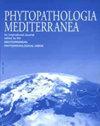Copper resistance mechanisms in plant pathogenic bacteria
IF 1.9
3区 农林科学
Q2 AGRONOMY
引用次数: 4
Abstract
Copper is an essential element for microbes as it is involved in many redox reactions. Numerous resistance systems have been evolved in microbes to maintain copper homeostasis under copper stress conditions. These systems are responsible for the influx and efflux of copper ions in the cells. In phytopathogenic bacteria, copper ions play essential roles during disease development in plants. Copper-based chemicals are extensively used for control of diseases caused by bacteria, which leads to induced pathogen resistance derived from various copper resistance systems. Previous studies have shown that copper ions are harnessed by host plants to protect against bacterial infections, triggering immune responses through activation of defence signalling pathways. Thus, it was anticipated that bacterial copper resistance could play an alternative role in adaptation to plant immunity. This review summarizes current knowledge of copper resistance systems in plant pathogenic bacteria, which may provide a new perspective of molecular mechanisms associated with bacterial adaptation in host plants.植物病原菌对铜的抗性机制
铜是微生物必不可少的元素,因为它参与了许多氧化还原反应。在铜胁迫条件下,微生物已经进化出许多抗性系统来维持铜的稳态。这些系统负责细胞内铜离子的流入和流出。在植物病原菌中,铜离子在植物病害发生过程中起着至关重要的作用。铜基化学品被广泛用于控制由细菌引起的疾病,这导致诱导病原体产生各种铜抗性系统的抗性。先前的研究表明,寄主植物利用铜离子来防止细菌感染,通过激活防御信号通路触发免疫反应。因此,预计细菌对铜的抗性可能在适应植物免疫方面发挥替代作用。本文综述了目前植物病原菌对铜的抗性系统的研究进展,为细菌适应寄主植物的分子机制提供了新的视角。
本文章由计算机程序翻译,如有差异,请以英文原文为准。
求助全文
约1分钟内获得全文
求助全文
来源期刊

Phytopathologia Mediterranea
生物-植物科学
CiteScore
4.40
自引率
8.30%
发文量
28
审稿时长
6-12 weeks
期刊介绍:
Phytopathologia Mediterranea is an international journal edited by the Mediterranean Phytopathological Union. The journal’s mission is the promotion of plant health for Mediterranean crops, climate and regions, safe food production, and the transfer of new knowledge on plant diseases and their sustainable management.
The journal deals with all areas of plant pathology, including etiology, epidemiology, disease control, biochemical and physiological aspects, and utilization of molecular technologies. All types of plant pathogens are covered, including fungi, oomycetes, nematodes, protozoa, bacteria, phytoplasmas, viruses, and viroids. The journal also gives a special attention to research on mycotoxins, biological and integrated management of plant diseases, and the use of natural substances in disease and weed control. The journal focuses on pathology of Mediterranean crops grown throughout the world.
The Editorial Board of Phytopathologia Mediterranea has recently been reorganised, under two Editors-in-Chief and with an increased number of editors.
 求助内容:
求助内容: 应助结果提醒方式:
应助结果提醒方式:


